Integration: Customer Scenarios
Cross-cutting theme technical leaders and senior editors: AmySilberbauer
In this section we capture the scenarios developed through direct collaboration with customers in the most recent Voice of the Customer (VoiCE) sessions held in Orlando in June 2014. Thank you to all of the participants that helped us develop these initial scenarios. You will notice that we developed our top scenarios for integration focus largely based on this content. You can see those high priority scenarios here: High Priority Scenarios.
In each of the scenarios, note the products involved, the integration points, the activity flow, and the integration issues encountered. Also, customers specified some key areas for improvement.
Pre-Deployment (Install/Upgrade) Scenarios
This section illustrates the pre-deployment scenarios as described by you, our customers. The key role in these scenarios is the Tool Administrator.New Installation
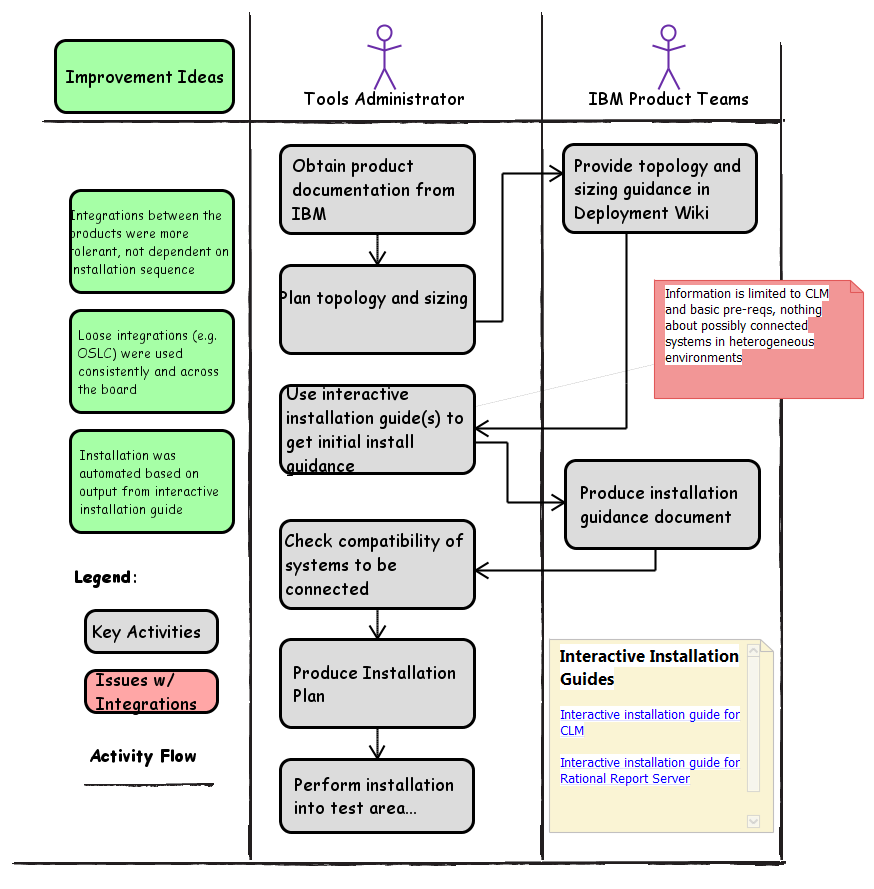
| This is a typical New Installation scenario. The key issue identified here is the lack of information (documentation) available. Further, it was noted that when information is available, it is either incomplete or in some cases just plain wrong. Among the thoughts for improvement are:
|
Upgrade
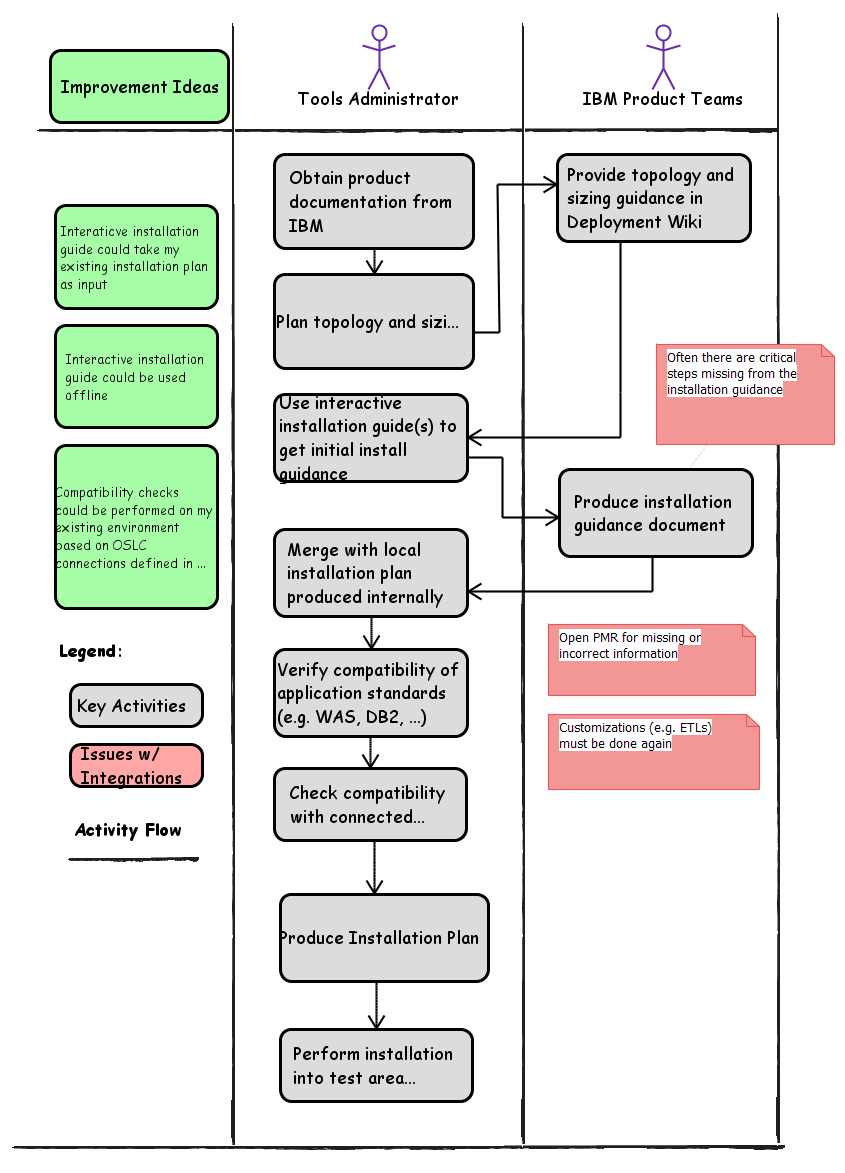
| This is a typical Upgrade scenario. The key issue identified here is that there are often critical steps missing from the upgrade guidance. Among the thoughts for improvement are:
As in the new installation scenario, best practices include use of the Interactive Installation Guides, although because this is an upgrade scenario, improvements to this process include the need to customize the output from the installation guides with information from the existing environment. |
Post-Deployment (Usage) Scenarios
Just as we describe the Golden Topologies supported and validated by Rational, we also want to focus on the critical usage scenarios specific to integrations. The high priority scenarios related to usage scenarios are described below. These are our Golden Integration Scenarios that will be our primary focus in the coming months. The key roles in these scenarios vary, but they are essentially the Practitioners in the target environment.Requirements Management & Analysis
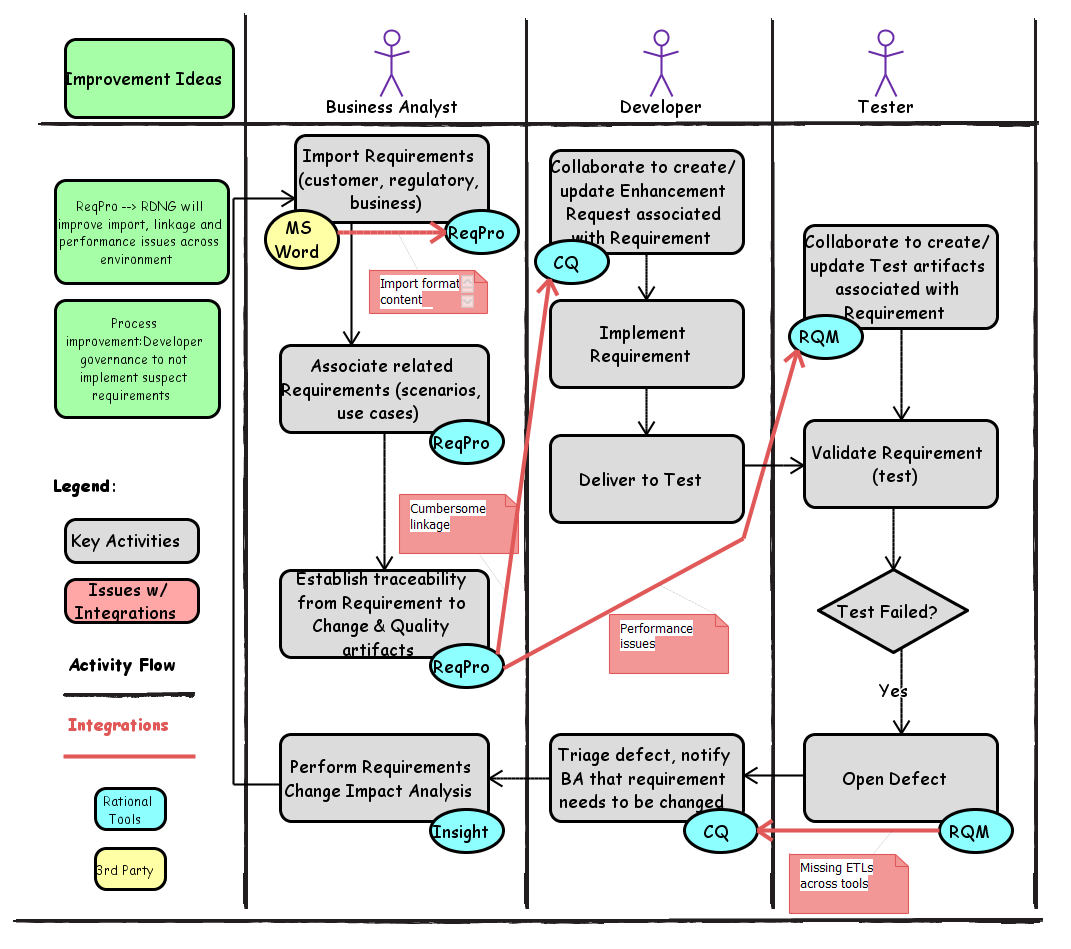
| This scenario describes the activity of managing and analyzing requirements across the development lifecycle. The roles, activities, products, and integrations are identified. Products include Rational strategic and legacy products as well as third-party products. Key issues include:
|
Development & Build
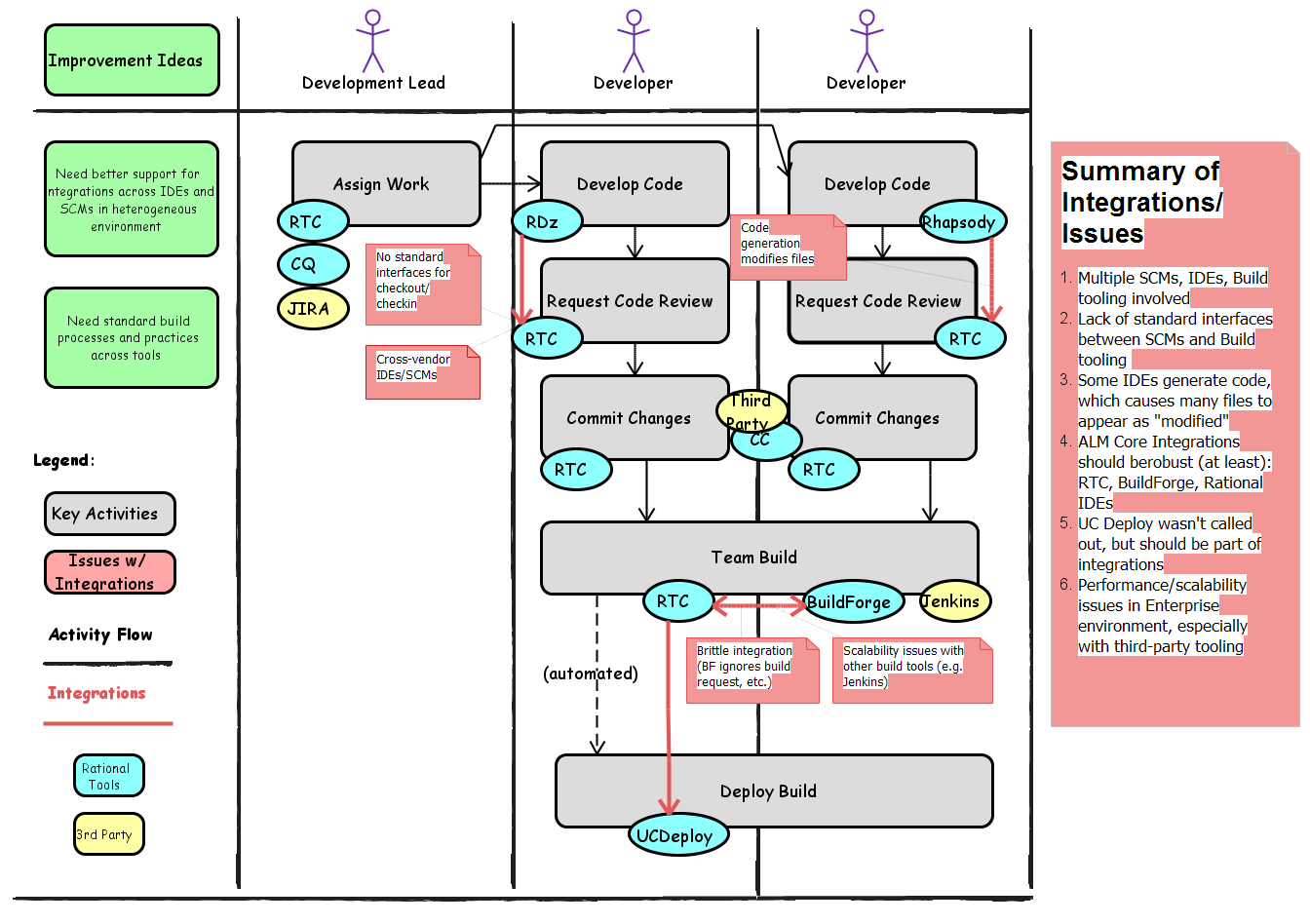
| This scenario describes a core activity supported by Rational: Development & Build. The roles, activities, products, and integrations are identified. Products include Rational strategic and legacy products as well as third-party products. The significant issues in this scenarios largely reflect the vast diversity of tools involved for development, testing and build:
|
Migration
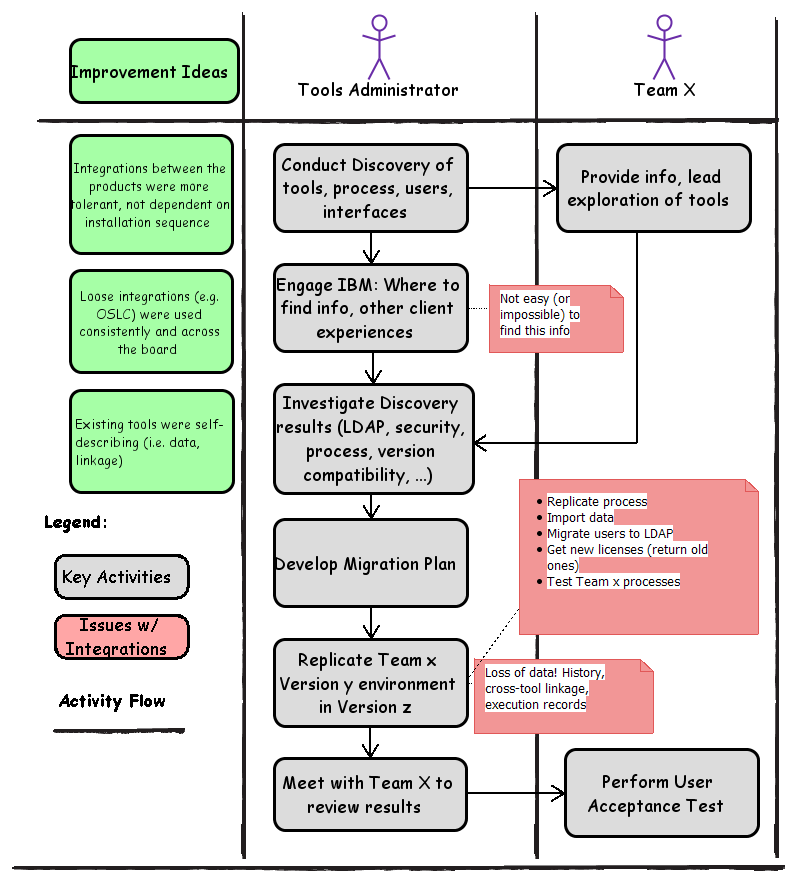 | This scenario is interesting in that, at first glance, it may seem to have little to do with product-level integrations. In fact, the Migration scenario does involve integrations in the sense that it is typically a longer-term activity in which multiple systems co-exist at least for some period of time. In addition, integration points must address the mapping of attributes and other artifact characteristics from the source system to the target system. |
Related topics: Deployment web home, Deployment web home
External links:
Additional contributors: AllisonLynch, IanCompton, AnthonyKesterton, MarianneHollier, SherriMidyette
| I | Attachment | Action | Size | Date | Who | Comment |
|---|---|---|---|---|---|---|
| |
DevelopmentBuildRoleBased.png | manage | 149.4 K | 2014-08-13 - 16:07 | UnknownUser | Customer version of the Development & Build Scenario |
| |
MigrateTeamxfromVersionytoVersionz.png | manage | 86.2 K | 2014-08-11 - 18:23 | UnknownUser | Customer version of the Migration Scenario |
| |
PlanExecuteNewInstall.png | manage | 95.4 K | 2015-07-01 - 18:49 | UnknownUser | Customer version of the Plan & Execute a New Install Scenario |
| |
PlanExecuteUpgrade.png | manage | 105.5 K | 2015-07-01 - 18:50 | UnknownUser | Customer version of the Plan & Execute an Upgrade Scenario |
| |
RequirementsManagementAnalysis.png | manage | 150.4 K | 2014-08-13 - 16:08 | UnknownUser | Customer version of the Requirements Analysis Scenario |
Contributions are governed by our Terms of Use. Please read the following disclaimer.
Dashboards and work items are no longer publicly available, so some links may be invalid. We now provide similar information through other means. Learn more here.

